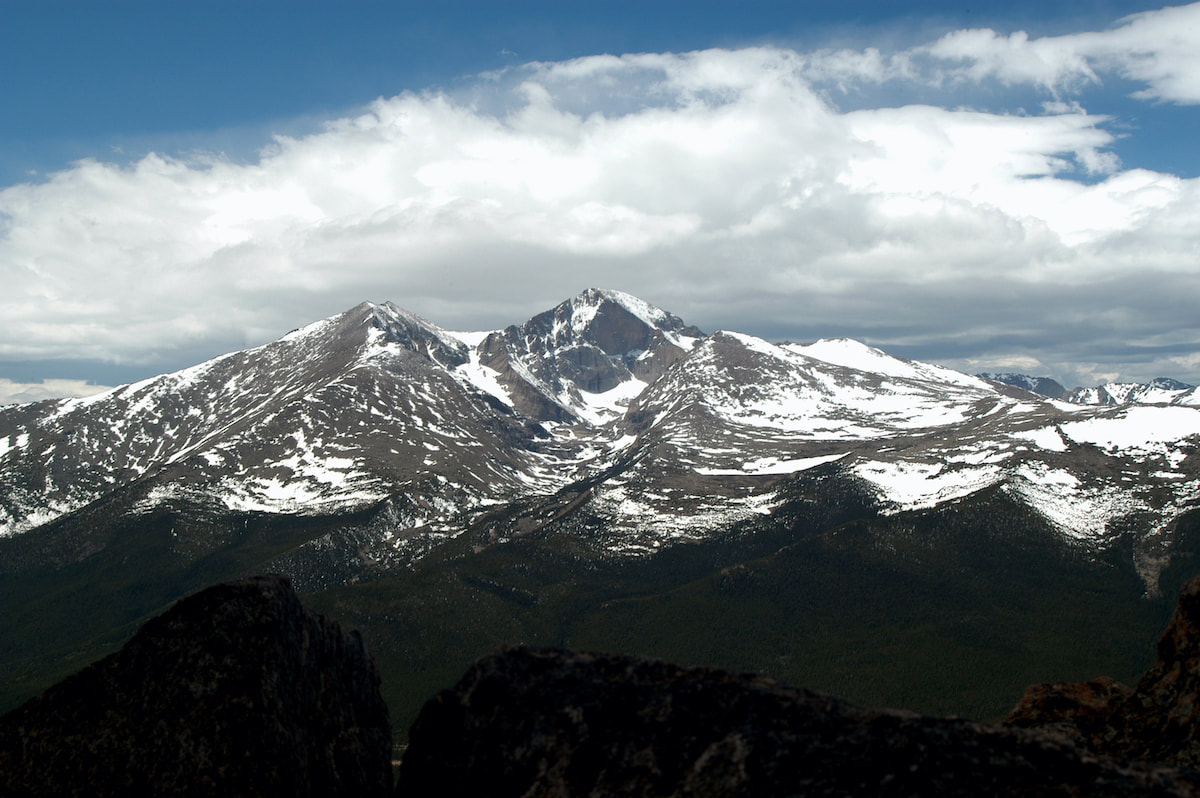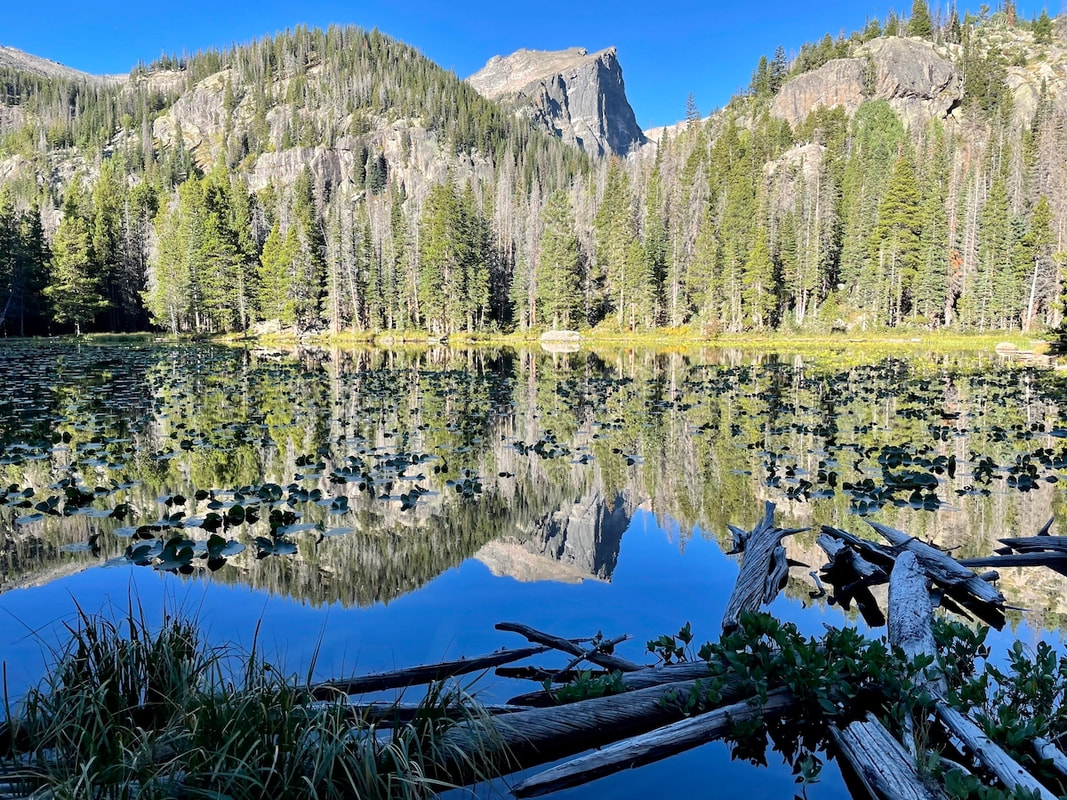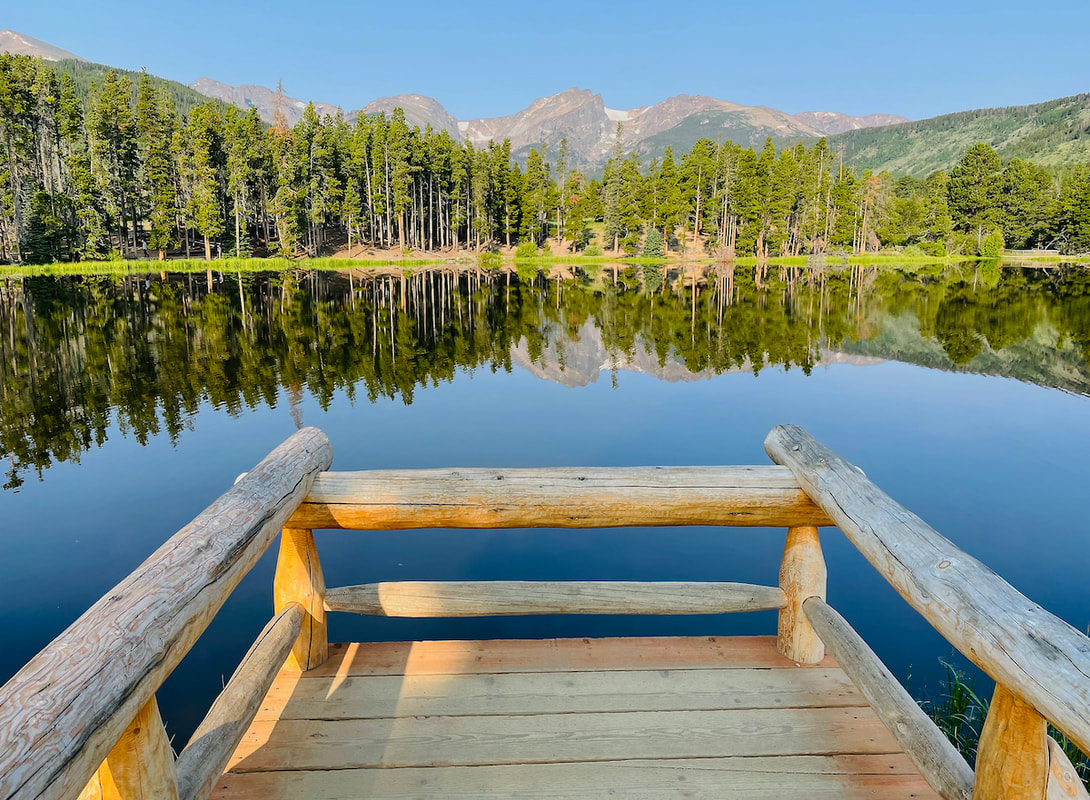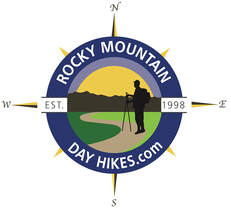|
Notes from the
Trail |
|
The History Behind the Names of Popular Destinations in Rocky Mountain National Park By Jamie Palmesano, Brownfield’s all photos by Jamie Palmesano When you hike Rocky Mountain National Park, you're moving through a landscape of jagged peaks, roaring waterfalls, and shimmering lakes. You're also walking through history—a living museum of stories preserved in the names carved onto trail signs and listed on maps. Behind the summits and streams is a tale of exploration, tribute, or natural wonder. Each step is a bit more meaningful when you know the stories behind the landscape. Rocky Mountain National Park was officially established on January 26, 1915, after years of advocacy led by naturalist Enos Mills and other conservationists who recognized the need to protect this extraordinary wilderness. Long before it became a national park, the area was home to Native American tribes, including the Ute and Arapaho, who traveled, hunted, and lived among these rugged landscapes. With its designation, RMNP became one of the earliest national parks in the United States, preserving a stunning diversity of alpine tundra, dense forests, beautiful lakes, and soaring peaks for future generations. Today, Rocky Mountain National Park spans 415 square miles and welcomes millions of visitors each year, offering a timeless reminder of America’s natural beauty. Rocky Mountain National Park is home to approximately 125 named peaks — with elevations ranging from just over 8,000 feet to the park’s tallest summit, Longs Peak at 14,256 feet. There are over 60 peaks above 12,000 feet. There three main ranges in the park:
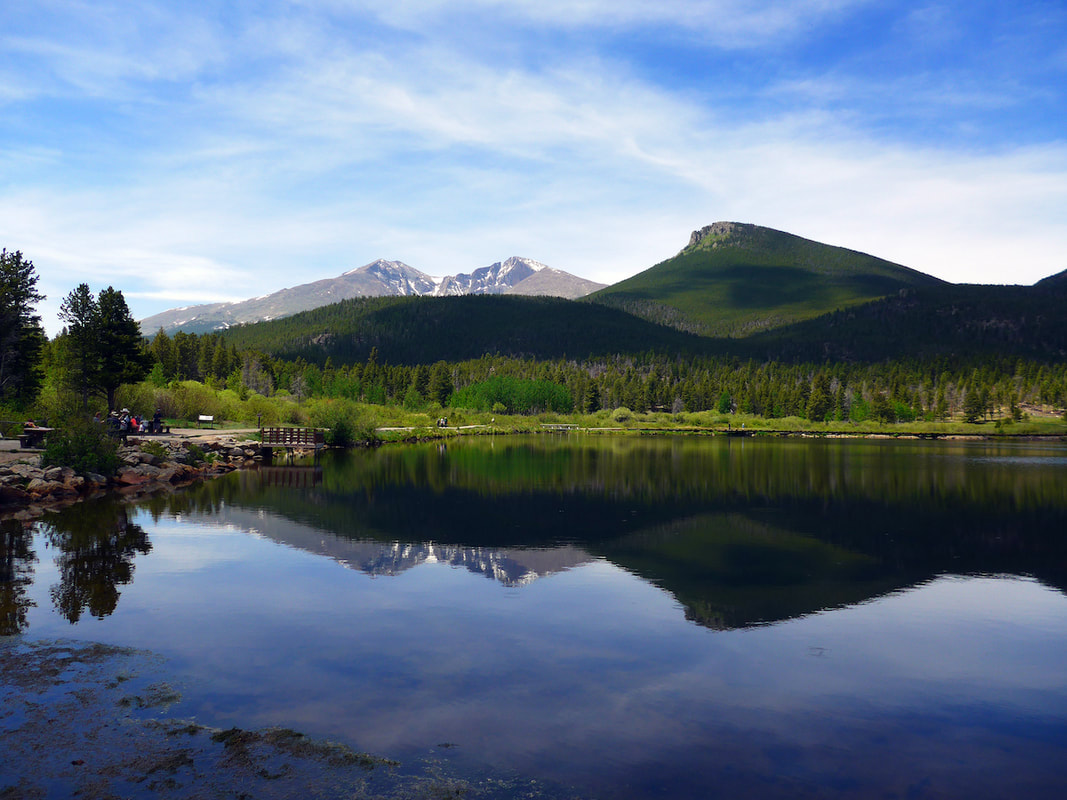 Longs Peak and the Estes Cone. Longs Peak and the Estes Cone. PEAKS Longs Peak - Named for Major Stephen H. Long, who led an 1820 expedition into the Rocky Mountains. Although Long himself never climbed the peak, his name became forever tied to this towering 14,256-foot summit—the only "fourteener" in northern Colorado. Mount Meeker - This neighbor to Longs Peak honors Nathan Cook Meeker, a visionary who helped found the Union Colony in Greeley, Colorado. His tragic death during the Meeker Massacre of 1879 adds a somber note to the mountain's story. Estes Cone - Joel Estes, a Kentucky-born pioneer, discovered and settled the Estes Valley in 1859. Estes Cone, a striking peak to the south, bears his name as a testament to his influence on the area's early development.
Rocky Mountain National Park boasts approximately 147 named lakes, encompassing a diverse array ofof alpine and subalpine bodies of water. These lakes range from easily accessible spots like Bear Lake to remote backcountry gems such as Lake Nanita. Notably, many of these lakes are glacial in origin, nestled beneath the park's towering peaks and offering stunning reflections and serene landscapes. Rocky Mountain National Park is home to over 30 named waterfalls, each offering unique beauty and varying levels of accessibility. These waterfalls are scattered throughout the park, with some easily reachable via short hikes, while others require more strenuous treks into the backcountry. Notable examples include Alberta Falls, Adams Falls, Ouzel Falls, and Chasm Falls, among others. Many of these waterfalls are particularly stunning during the spring and early summer months when snowmelt feeds their cascades.
landscape. The name preserves a rare Native American place name still in use today within the park. A fun fact is that in 2022, Lake Haiyaha gained extra fame when a rare event (rock flour runoff from nearby glaciers) turned its waters a striking turquoise color. Bierstadt Lake - Named in honor of Albert Bierstadt, a 19th-century landscape painter known for his dramatic portrayals of the American West. Though Bierstadt never painted this specific lake, his work inspired a generation to value the wild beauty of places like the Rockies, fueling early conservation movements. Sprague Lake – Honors Abner Sprague, an early homesteader, guide, and lodge owner in the Estes Park area. He was a strong advocate for national park status. The next time you lace up your boots and head into the park, take a moment to notice the names on trail signs and maps. Each one is a story, an echo, a whisper that these wild places keep the memories of old alive and well. And by hiking them, you honor the legacy of those who understood the magnificence of this remarkable land.
0 Comments
Leave a Reply. |
"The wild requires that we learn the terrain, nod to all the plants and animals and birds, ford the streams and cross the ridges, and tell a good story when we get back home." ~ Gary Snyder
Categories
All
“Hiking -I don’t like either the word or the thing. People ought to saunter in the mountains - not hike! Do you know the origin of the word ‘saunter?’ It’s a beautiful word. Away back in the Middle Ages people used to go on pilgrimages to the Holy Land, and when people in the villages through which they passed asked where they were going, they would reply, A la sainte terre,’ ‘To the Holy Land.’ And so they became known as sainte-terre-ers or saunterers. Now these mountains are our Holy Land, and we ought to saunter through them reverently, not ‘hike’ through them.” ~ John Muir |
© Copyright 2025 Barefoot Publications, All Rights Reserved

